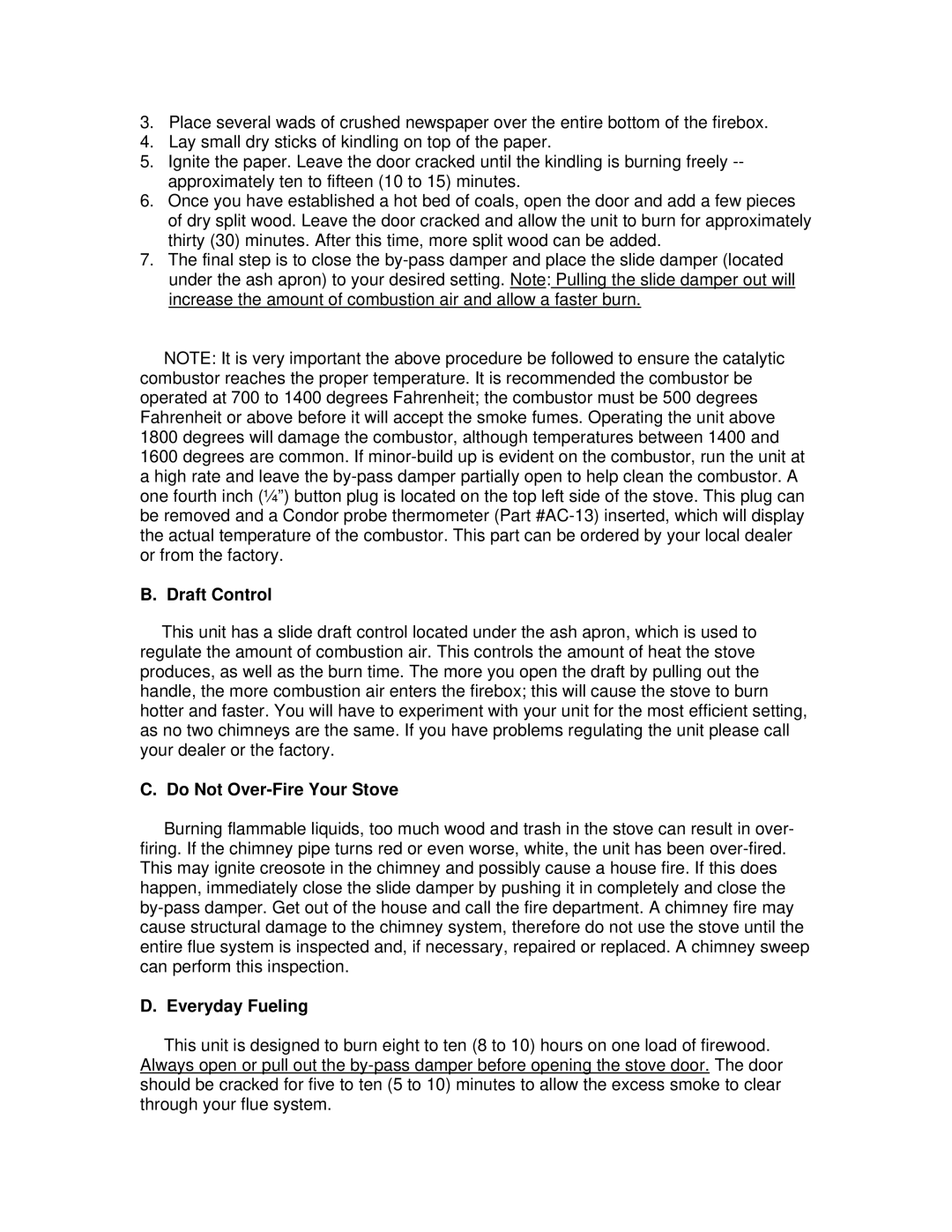24-ICD, 50-SHW25, 50-TRW25 specifications
England's Stove Works has earned a reputation for crafting solid and efficient heating solutions for homes. Among their popular models are the 50-SHW25, 50-TRW25, and 24-ICD which boast impressive features and technologies designed to enhance performance and provide comfort during colder months.The England's Stove Works 50-SHW25 is a freestanding wood stove that offers exceptional heating efficiency. With a durable metal construction and a firebox designed to accommodate larger logs, the SHW25 delivers a high heat output of 75,000 BTUs, making it ideal for medium to large spaces. This model includes a large viewing window with an air-wash system that keeps the glass clean while allowing users to enjoy the ambiance of the fire. Furthermore, it features a non-catalytic combustion system, which optimizes burn efficiency and significantly reduces emissions.
Next, the 50-TRW25 wood stove represents a versatile heating option that combines modern design with traditional functionality. Similar to the SHW25, the TRW25 also provides 75,000 BTUs of heat output, making it suitable for heating larger areas. This model is designed with a unique top-loading door which allows for easier loading of wood and a greater range of log sizes. The ceramic glass door not only provides an unobstructed view of the flames but also improves the overall efficiency of the burning process. The TRW25 is also equipped with a built-in ash pan for hassle-free clean-up, further enhancing its user-friendly design.
The 24-ICD, on the other hand, is distinguished as a compact yet powerful option, making it a great choice for smaller spaces. With a maximum heat output of 45,000 BTUs, this model retains impressive efficiency without compromising on style. The 24-ICD features an innovative intelligent combustion design that optimizes airflow for better heat management and reduced emissions. Its small footprint and attractive design allow it to fit seamlessly into a variety of home aesthetics while still providing supplemental heat.
All three models from England's Stove Works come with a robust warranty and support from a well-established manufacturer, ensuring reliability and customer satisfaction. Whether opting for the heavy-duty SHW25, versatile TRW25, or compact 24-ICD, homeowners can expect quality craftsmanship and advanced technology that keeps their spaces warm and cozy throughout the heating season.
